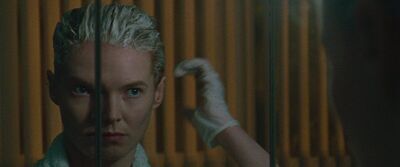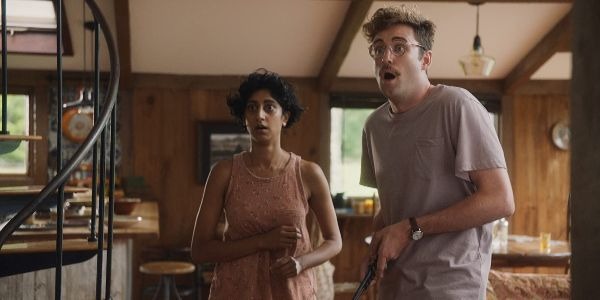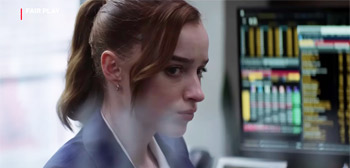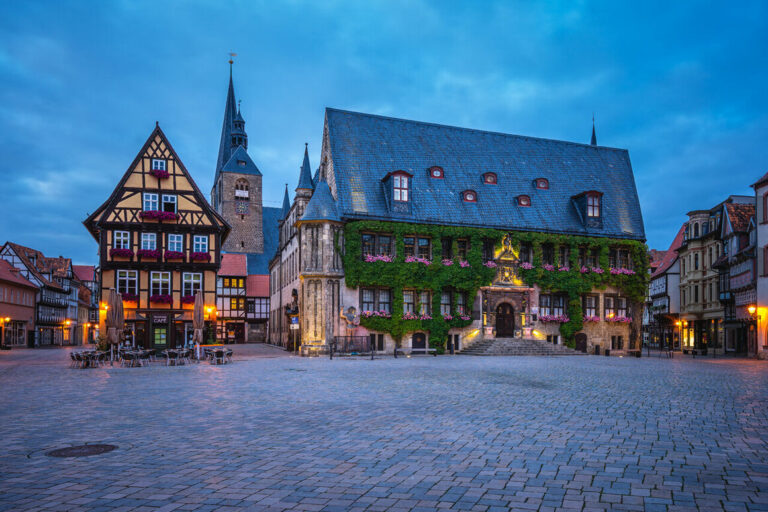Blue Jean

Jean (Rosy McEwen) is dying her hair blonde on a quiet night in. The only noise is the sound of a dating show on her television. Her eyes are blue, but soon we notice that so much of the world around her is also blue. Her bathroom is a pretty pale blue, and so is her jacket, the P.E. uniform at the school where she teaches—which also has blue walls. Her car is a darker shade of blue, and the lights of her favorite club are mostly blue. The palette gives the movie its title but beyond its creative premise, Georgia Oakley’s “Blue Jean” uses its melodic visual aesthetic as part of the story. It immerses the viewer in the cold, isolated feelings of Jean’s repressed existence in late 1980s England when Margaret Thatcher was about to sign legislation to ostracize the gay and lesbian community. Jean’s neighbors and family give her funny looks, and she has to suffocatingly hide who she is from her coworkers.
With her feature debut, director Oakley uses an incredible amount of detail in bringing to life the characters she’s written and the painstaking efforts to color code her sets, costumes, and lighting to get just the right emotional tone and shades of ’80s pastels. Her style is reminiscent of another British filmmaker, Joanna Hogg, who also takes great pains crafting gorgeous compositions for her frame. Other than blue, from blue grays to saturated deep blues, the color that makes the second most notable appearance is pink, as if emphasizing the rigid gender expectations society, her co-workers, and relatives have for Jean. Her much more feminine coworker and sister wear shades of pink with ease, but Jean is off in her blue world and its blue hues. The two colors contrast, yet Victor Seguin’s cinematography incorporates them flawlessly into a dreamlike vision shot on 16mm. Jean’s story may be heartbreaking, but Oakley and her crew’s technical work is awe-inspiring.
What little breathing room Jean enjoys outside her home extends only to queer safe spaces like the lesbian bar where she shoots pool and drinks with friends or her girlfriend’s home with other lesbian roommates. Even then, Jean still doesn’t look fully comfortable switching from passing straight at work to being herself, occasionally looking around as if afraid to be caught. She panics over her girlfriend, Viv (Kerrie Hayes), and her much more out and proud behavior. Jean worries she’ll lose her job at the school if they find out she’s a lesbian, and the feeling only intensifies when a new lesbian student arrives and starts visiting Jean’s favorite nightspot. Jean’s efforts to push the young girl back into conformity backfire, forcing her to reckon with hiding her identity.
McEwen brings Jean’s complex inner conflict to life with every measured stare and carefully guarded pose. Her body language is as tense as a trip wire, set to snap at any second, which is radically different from the energy Hayes gives Viv, an unapologetically tattooed and head-shaved punk ready to return dirty stares with a flirtatious one. She’s not one to be intimidated, but Jean sadly lives in a perpetual state of caution, bringing problems to their relationship.
“Blue Jean” may be a period piece, but it’s timely as LGBTQ rights regress in both the U.K. and the U.S., with the rhetoric of “save the children” once again weaponized against the queer community. Jean’s central struggle to come out or continue hiding to save her job is a problem she agonizes over throughout the movie, turning down invites to go to the pub with coworkers and guarding herself against being associated with other lesbians. Jean quickly retreats when a bully torments new student Lois (Lucy Halliday) or when Viv calls her at work. “I know it seems unfair, but I’m trying to help you,” Jean insists when coaching Lois to avoid doing anything that may draw attention. Through their shared experiences, the movie’s scope widens, showing the difficulty of living as a queer person when homophobia is internalized, in person, on the news, and practically in the air. At one point, Viv angrily confronts Jean about her efforts to kick Lois out of the lesbian bar, “How is that girl going to know she has a place in this world?” And sadly, it seems as if more and more people today are forced to ask a similar question.
Oakley’s care and McEwen’s intense performance make “Blue Jean” one of this year’s most impressive movies. It deals with so much heartbreak without as many words; its pain is communicated through its somberly beautiful palette and performances. In addition to Soraya Gilanni’s production design and Kirsty Halliday’s costumes, the film’s soundtrack immerses the audience in the era’s music, with songs that range from new wave tracks like New Order’s “Blue Monday” and Pink Rhythm’s “Melodies of Love” to the disco-tinged delights of Jimmy Ross’ “First True Love Affair (Larry Levan Remix)” and the punk beat of The Larks U.K.’s “Maggie Maggie Maggie Out Out Out.” But as Jean argues with her sister about holding onto her old wedding photo and shrinks behind her coworkers bad-mouthing gays and lesbians like her, the focus returns to her face, carefully obscuring her outrage, and tallies the day-to-day indignities she endures to fight for a place in a society that still rejects her. She’s powerless to change the world around her, but as we watch Jean find her strength, we see what’s possible when we make the world more accepting of ourselves and others.
Now playing in theaters.





